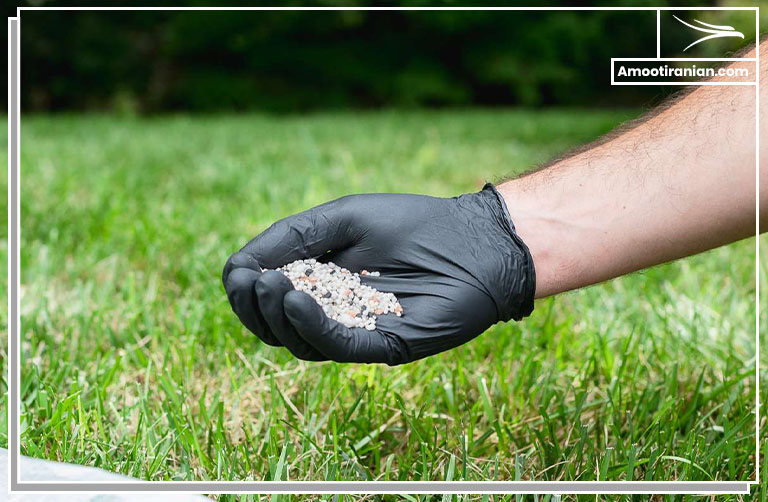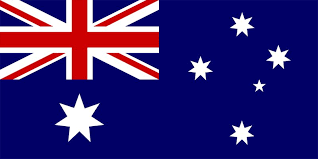Nitrogenous fertilizers are a type of fertilizer that provides nitrogen to plants. It is their primary function. Nitrogen is an indispensable nutrient for plant growth.
.
Nitrogen is required for various metabolic processes, including the production of:
.

.
Nitrogenous Fertilizer Meaning
Nitrogenous fertilizer refers to any type of fertilizer that has nitrogen as its primary nutrient. Nitrogen is one of the important elements that is required for plant growth and enlargement. It plays a critical role in various physiological processes within plants, including photosynthesis, protein synthesis, and overall plant metabolism.
.
Nitrogenous fertilizers can be either organic or inorganic:
.
1.Organic nitrogenous fertilizers are derived from natural sources, such as animal manure, compost, or plant residues.
They release nitrogen slowly as they decompose, providing a long-term nutrient supply to plants.
.
2. Inorganic nitrogenous fertilizers, on the other hand, are synthetically produced and usually come in the form of granules, pellets, or powders.
They contain nitrogen compounds such as ammonium nitrate, urea, ammonium sulfate, or calcium ammonium nitrate. Inorganic nitrogenous fertilizers provide nitrogen in a readily available form for plants, promoting rapid growth and high crop yields.
.
Farmers and gardeners use nitrogenous fertilizers to supplement the nitrogen levels in soil, especially in cases where the natural nitrogen content is insufficient to support optimal plant growth.
.
Proper application of nitrogenous fertilizers can help enhance plant productivity, improve crop quality, and increase agricultural yields.
.
However, it is important to use nitrogenous fertilizers judiciously and in accordance with recommended application rates to prevent environmental pollution and maintain soil health.
.

.
Nitrogenous Fertilizer Overview
In 2021, the global trade of nitrogenous fertilizers reached a significant milestone as it became the 120th most traded product worldwide.
.
The total trade value of nitrogenous fertilizers amounted to $36.5 billion.
.
It reflects a remarkable growth of 58.8% compared to the previous year, where exports amounted to $23 billion.
.
It is noteworthy that despite this substantial growth, the trade in nitrogenous fertilizers still represents a relatively small portion, accounting for merely 0.0017% of the total world trade.
.

.
Nitrogenous Fertilizers Ranking In PCI
According to the Product Complexity Index (PCI), Nitrogenous Fertilizers hold the 927th position.
.
What is PCI?
The PCI is an indicator that assesses the complexity and diversity of a country's export basket based on the capabilities that are required to produce and export certain goods. A higher ranking indicates: A higher level of complexity and technological sophistication associated with the production and trade of a specific product.
.
The 927th ranking suggests that Nitrogenous Fertilizers are considered a product of moderate complexity within the global trade landscape.
.

.
Nitrogenous Fertilizers Examples
.
How many types of nitrogen fertilizers are there?
.
There are several types of nitrogen fertilizers available, each with its own characteristics and forms of nitrogen.
.
Here are the primary types of nitrogen fertilizers:
.
1. Ammonium-Based Fertilizers
These fertilizers provide nitrogen in the form of ammonium ions (NH4+). They are quick-acting and suitable for soils with a low pH.
.

.
The list of commonly used ammonium-based fertilizers:
- Ammonium Nitrate (NH4NO3)
- Ammonium Sulfate ((NH4)2SO4)
- Ammonium Phosphate ((NH4)3PO4)
- Ammonium Chloride (NH4Cl)
- Ammonium Carbonate ((NH4)2CO3)
- Ammonium Acetate (CH3COONH4)
- Ammonium Dihydrogen Phosphate (NH4H2PO4)
- Ammonium Thiosulfate ((NH4)2S2O3)
- Ammonium Polyphosphate ((NH4PO3)n)
- Ammonium Nitrite (NH4NO2)
.
2. Urea-Based Fertilizers
Urea is a widely used nitrogen fertilizer that contains nitrogen in the form of urea (CO(NH2)2). Urea is converted into ammonium ions by soil microorganisms.
.
Urea-based fertilizers include urea granules and liquid urea-ammonium nitrate solutions (UAN).
- Urea (CO(NH2)2)
- Urea-Ammonium Nitrate (UAN)
- Ammonium Nitrate Urea (ANU)
- Urea-Formaldehyde (UF)
.
Don’t miss the below relevant article:
“Difference Between Ammonium Nitrate and Urea“
.
3. Nitrate-Based Fertilizers
These fertilizers provide nitrogen in the form of nitrate ions (NO3-). Nitrate-based fertilizers are highly soluble and provide readily available nitrogen to plants
.
A list of commonly used nitrate-based fertilizers:
- Ammonium Nitrate (NH4NO3)
- Calcium Nitrate (Ca(NO3)2)
- Potassium Nitrate (KNO3)
- Sodium Nitrate (NaNO3)
- Magnesium Nitrate (Mg(NO3)2)
- Iron Nitrate (Fe(NO3)3)
- Copper Nitrate (Cu(NO3)2)
- Zinc Nitrate (Zn(NO3)2)
- Manganese Nitrate (Mn(NO3)2)
.
These fertilizers provide nitrogen in the form of nitrate (NO3-) ions, which are readily available for plant uptake and utilization.
They may also contain other nutrients, depending on the specific formulation.
.
4. Ammonium Nitrate/Ammonium Sulfate Blends
These fertilizers are a combination of ammonium nitrate (AN) and ammonium sulfate (AS). They provide a mix of ammonium and nitrate nitrogen, offering both quick-release and slow-release nitrogen sources.
.
Here’s a list of commonly used Ammonium Nitrate/Ammonium Sulfate blend fertilizers:
.
- CAN (Calcium Ammonium Nitrate): A blend of ammonium nitrate and ammonium sulfate with added calcium. It typically contains around 27-28% nitrogen in the form of ammonium nitrate and ammonium sulfate.
- ASN (Ammonium Sulfate Nitrate): A blend of ammonium nitrate and ammonium sulfate. It usually contains around 26-28% nitrogen, with a balanced ratio of ammonium nitrate and ammonium sulfate.
- ANS (Ammonium Nitrate Sulfate): A blend of ammonium nitrate and ammonium sulfate. It typically contains varying ratios of ammonium nitrate and ammonium sulfate, providing a balanced nitrogen source.
- UAS (Urea-Ammonium Sulfate): A blend of urea and ammonium sulfate. It combines the fast-release nitrogen from urea with the sulfur and slower-release nitrogen from ammonium sulfate.
.
5. Slow-Release Fertilizers
These fertilizers are designed to release nitrogen gradually over an extended period. They include coated urea, controlled-release urea, and organic nitrogen sources such as compost or manure. Slow-release fertilizers provide sustained nutrient supply to plants and reduce nutrient losses through leaching or volatilization.
.
A list of commonly used nitrogenous slow-release fertilizers:
- Urea-Formaldehyde (UF): Slowly releases nitrogen over an extended period of time.
- Polymer-Coated Urea (PCU): Urea granules coated with a polymer material that controls the release of nitrogen.
- Isobutylidene diurea (IBDU): A nitrogen fertilizer that releases nitrogen gradually as it undergoes microbial degradation in the soil.
- Sulfur-Coated Urea (SCU): Urea granules coated with a layer of sulfur that controls the release of nitrogen.
- Organic-Based Slow-Release Fertilizers: These include various organic materials, such as composted manure, bone meal, blood meal, and feather meal, which release nitrogen slowly as they decompose.
- Methylenediurea (MDU): A slow-release nitrogen fertilizer that gradually releases nitrogen through hydrolysis.
- Nutrient-Enhanced Slow-Release Fertilizers: These are slow-release fertilizers that may also contain additional nutrients like phosphorus and potassium, providing a balanced nutrient supply over time.
.
These slow-release fertilizers are designed to provide a steady and controlled release of nitrogen to plants, offering longer-lasting nutrition and reducing the risk of nutrient leaching.
.

.
What Is The Most Common Nitrogen Fertilizer?
The most common nitrogen fertilizer used worldwide is Urea (CO(NH2)2).
.
Urea is a solid, granular fertilizer that contains a high concentration of nitrogen.
It is widely available, cost-effective, and easy to handle, which contributes to its popularity.
Urea is highly soluble in water, making it readily available for plant uptake. Due to its versatility and effectiveness, urea is widely used in various agricultural and horticultural applications.
.
Amoot Iranian Trading Company is an old supplier and exporter of urea fertilizer based in Iran. Both the urea of Iran and Turkmenistan can be exported from Bandar Abbas port of Iran to any part of the world you ask at best prices and on time.
Customers can visit the urea stocks of Amoot in Bandar Abbas to ensure the quality and purity. SGS also can be provided for customers if they want.
.

.
Send a message or call our experts for more data.
.
Why Are Nitrogenous Fertilizers Important?
.
Why is the use of nitrogen fertilizers in agriculture so important?
What is the role of nitrogen in agriculture?
.
Nitrogenous fertilizers are important for several reasons:
.
1. Essential Nutrient
Nitrogen is an essential nutrient for plant growth and development.
It is a key component of amino acids, proteins, chlorophyll, and nucleic acids, which are vital for:
- plant structure
- metabolism
- reproduction
.
2. Plant Growth and Yield
Adequate nitrogen supply promotes vigorous vegetative growth.
It leads to increased biomass production and higher crop yields.
Nitrogen helps plants develop healthy leaves, stems, and roots, allowing them to efficiently utilize sunlight, water, and other nutrients.
.
3. Chlorophyll Formation
Nitrogen is a crucial component of chlorophyll, the pigment responsible for photosynthesis.
Sufficient nitrogen levels in plants enhance photosynthetic activity, leading to improved energy production and carbohydrate synthesis.
.
4. Protein Synthesis
Nitrogen is a fundamental element in the formation of proteins.
Proteins are involved in numerous plant functions, including enzyme catalysis, nutrient transport, and defense mechanisms.
Nitrogenous fertilizers help ensure an adequate supply of nitrogen for protein synthesis.
.
5. Crop Quality
Nitrogen availability influences the quality of harvested crops.
It contributes to the synthesis of essential compounds such as vitamins, minerals, and secondary metabolites, affecting the taste, nutritional value, and marketability of agricultural produce.
.
6. Soil Fertility Management
Nitrogen fertilizers can be used to address nitrogen deficiencies in soils.
By replenishing nitrogen levels, these fertilizers help maintain soil fertility and productivity, supporting sustainable agricultural practices.
.
However, it’s important to use nitrogenous fertilizers judiciously and in accordance with recommended application rates to minimize environmental impacts such as nutrient runoff and water pollution.
Proper nutrient management practices and considering the specific needs of different crops are crucial for optimizing the benefits of nitrogenous fertilizers while minimizing potential drawbacks.
.

.
Top Nitrogenous Fertilizers Exporters By Country 2021
.
In 2021, the leading exporters of nitrogenous fertilizers were as follows:
.
1.China
China emerged as the top exporter of nitrogenous fertilizers with a total export value of $4.62 billion.

.
2. Russia
Russia held a prominent position in nitrogenous fertilizer exports, with a significant export value of $4.56 billion.

.
3. Oman
Oman ranked third among the top nitrogenous fertilizer exporters, with exports amounting to $2.19 billion.

.
4. Qatar
Qatar secured a notable position in nitrogenous fertilizer exports, with a total export value of $1.97 billion.

.
5. Netherlands
The Netherlands, renowned for its agricultural sector, was among the leading exporters of nitrogenous fertilizers, with exports reaching $1.82 billion.

.
These countries played a pivotal role in meeting global demand for nitrogenous fertilizers and contributed significantly to the growth of the global fertilizer trade.
.
Top Nitrogenous Fertilizers Importers By Country 2021
.
In 2021, the leading importers of nitrogenous fertilizers were as follows:
.
1. Brazil
Brazil stood as the top importer of nitrogenous fertilizers, with imports valued at $4.42 billion.

.
2. United States
The United States ranked second among the top nitrogenous fertilizer importers, with a significant import value of $3.77 billion.

.
3. India
India held a prominent position in nitrogenous fertilizer imports, with imports amounting to $3.66 billion.

.
4. France
France secured a notable position in nitrogenous fertilizer imports, with a total import value of $1.49 billion.

.
5. Australia
Australia emerged as one of the leading importers of nitrogenous fertilizers, with imports reaching $1.31 billion.

.
These countries played a crucial role in meeting their domestic fertilizer demand and supporting their agricultural sectors.
.

.
Nitrogenous Fertilizer Tariffs
In 2018, Nitrogenous Fertilizers had an average tariff rate of 3.44%.
.
This placed it among the products with relatively low tariffs, ranking 1102nd lowest based on the HS4 product classification.
